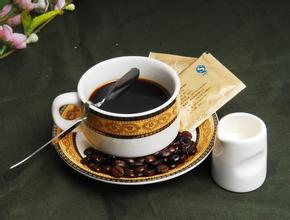Introduction to the characteristics of the grindability treatment of Antigua Flower God Coffee in Guatemala
Antigua is the oldest and most beautiful city in America. As early as 1543, Antigua was the capital of all colonial times in Central America, and the Government House of Spain was also set up here. After the great earthquake of 1773, the volcano destroyed the once-prosperous capital in an instant, robbing it of all its prosperity and beauty overnight. The whole city of Antigua was destroyed, so the capital was moved to Guatemala City. After this subversive mountain city, the splendor has disappeared for more than 200 years, and Antigua has never swaggered again. After being dull, Antigua is now run by the last remaining Indians. These hardworking and strong Indians became later coffee producers, who not only discovered the rich and attractive unique smell of Antigua coffee, but also brought it to people all over the world. Antigua is now a famous producer of coffee, rich volcanic soil, low humidity, strong sunlight and cool night breeze are the characteristics of Antigua. Three spectacular active volcanoes ── Agua, Acatenango and Fuego form a beautiful valley. Fuego active volcano also adds misty dust from time to time. Every 30 years or so, the area near Antigua is hit by a volcanic eruption, which provides more nitrogen to the already fertile land, and plenty of rainfall and sunlight make the place more suitable for growing coffee Antigua coffee has a velvety mellow, rich and lively spice flavor, richer taste, and it has a fascinating tobacco flavor and fine sour taste. It is a well-deserved boutique coffee. Compared with other varieties of coffee in Guatemala, critics prefer this mixed flavor coffee with spicy flavor. The extra hard coffee beans here are a rare good coffee with full grains, delicious taste and balanced acidity. In addition, its giant coffee beans have attracted a lot of attention in Guatemala. Today, although this emerald-like valley has been surrounded by dangerous active volcanoes in all directions, its vast, broad and fertile soil still tempts local coffee growers to cultivate high-quality coffee. On the other hand, they are more willing to be called the Mayan descendants who grow coffee.
The name of Incht Manor comes from the unique fruit name "Incht" in the Vivette Nanguo region. There are quite a variety of coffee trees in the manor. Here, Bourbon, Pacamara, Marago Gippe and other varieties are planted. It has an excellent record in Guatemala's COE competition history: nine times in the list, six times in the first place, and won the national championship three times in a row from 2008 to 2010. It is admirable that a manor has such a record in the coffee industry. It can be said that Incht is the most respected manor in Guatemala.
Coffee cultivation at Incht Manor began in 1900. With a total area of 720 hectares, it maintains 470 hectares of primeval forest in order to maintain the natural and precious microclimate. To prevent the microclimate of the whole manor from being affected by excessive reclamation. The use of reasonable farming methods to protect soil nutrients, so that soil quality will not be gradually degraded by long-term cultivation, so as to maintain rich organic matter. In addition, the hardware facilities of the Incht treatment plant are complete, and the quality of the coffee is guaranteed in the later stage through orderly and scientific management. Incht is also very careful in the planting of coffee trees, whether in harvesting, pruning, or fertilization, coffee trees are carefully protected. The planting management of the whole manor has the advanced concept of symbiosis and win-win with ecology. As a result, Incht was certified by the Rainforest Alliance.

Important Notice :
前街咖啡 FrontStreet Coffee has moved to new addredd:
FrontStreet Coffee Address: 315,Donghua East Road,GuangZhou
Tel:020 38364473
- Prev

Introduction to the characteristics of flavor description of Costa Rican Tarazhu coffee
Costa Rica's coffee industry, originally controlled by the Costa Rican Coffee Industry Company (InstitutodelCafdeCostaRica, ICAFE), has been taken over by the official Coffee Committee (OficinadelCaf). Among the exported coffee, those products that are considered to be of substandard quality are colored with blue vegetable dyes and then transferred back to China for sale. Coffee consumed at home
- Next

Colombian Huilan Coffee Grinding method introduction to the taste characteristics of fine coffee in producing areas
The pure taste of Colombian coffee, in addition to the natural environment with the most favorable conditions for coffee growth, is inseparable from the hard work of local growers. In Colombia, coffee cultivation has reached 1.07 million hectares, there are about 302000 coffee plantations in the country, and 30 to 40 per cent of the rural population depends directly on coffee production. There are many farms in Colombia, but
Related
- Detailed explanation of Jadeite planting Land in Panamanian Jadeite Manor introduction to the grading system of Jadeite competitive bidding, Red bid, Green bid and Rose Summer
- Story of Coffee planting in Brenka region of Costa Rica Stonehenge Manor anaerobic heavy honey treatment of flavor mouth
- What's on the barrel of Blue Mountain Coffee beans?
- Can American coffee also pull flowers? How to use hot American style to pull out a good-looking pattern?
- Can you make a cold extract with coffee beans? What is the right proportion for cold-extracted coffee formula?
- Indonesian PWN Gold Mandrine Coffee Origin Features Flavor How to Chong? Mandolin coffee is American.
- A brief introduction to the flavor characteristics of Brazilian yellow bourbon coffee beans
- What is the effect of different water quality on the flavor of cold-extracted coffee? What kind of water is best for brewing coffee?
- Why do you think of Rose Summer whenever you mention Panamanian coffee?
- Introduction to the characteristics of authentic blue mountain coffee bean producing areas? What is the CIB Coffee Authority in Jamaica?

